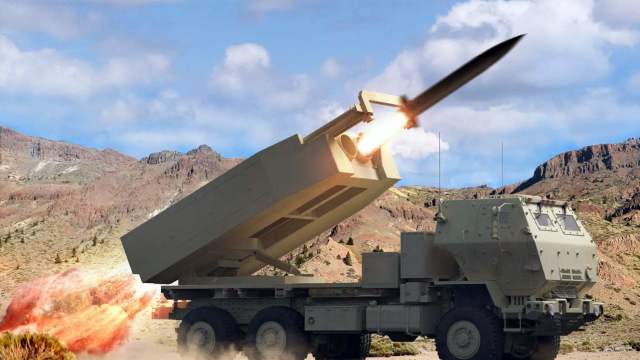And how will this affect the defense capability of our country
The Pentagon has announced the receipt of the first unit armed with a new PrSM surface–to-surface missile system. It was delivered in the first version for trial operation in the US Armed Forces. Izvestia analyzed the capabilities of the new missiles, and also found out what threats this event poses to the defense capability of our country.
The obvious and the unknown
The PrSM (Precision Strike Missile) is the first American hypersonic missile designed for the ground forces. It is designed for military missile systems and is launched from modified mobile launchers of the M142 HIMARS and M270A2 MLRS multiple launch rocket systems. The launch itself comes from containers that do not require any maintenance, and the installations can be easily and quickly recharged.
Depending on the tasks assigned, multiple launch rocket systems can use different types of ammunition with such transport and launch containers.

Precision Strike Missile
Image source: Photo: U.S. Army
The PrSM has a flight speed of 5M (five speeds of sound) and according to this indicator can formally be considered hypersonic. Its dimensions are smaller than those of the most powerful modern missile of the US Army MGM-140 ATACMS, and are 4 m long with a body diameter of only 430 mm (compared to 4 m and 610 mm for ATACMS).
The hypersonic munition carries a universal high-explosive fragmentation warhead weighing 91 kg, which is probably close in design to those currently used on conventional GMLRS missiles.
It is equipped with a solid-fuel rocket engine and an inertial control system with a satellite navigation unit. It provides an accuracy of several meters when applied up to 499 km. The increase in range compared to 300 km for ATACMS is noticeable, and it is achieved through the use of the most modern high-energy solid fuel.
Moreover, these are officially stated figures — in reality, it may turn out that the range will be higher — observers call the figures at 550, 700, and even 800 km.
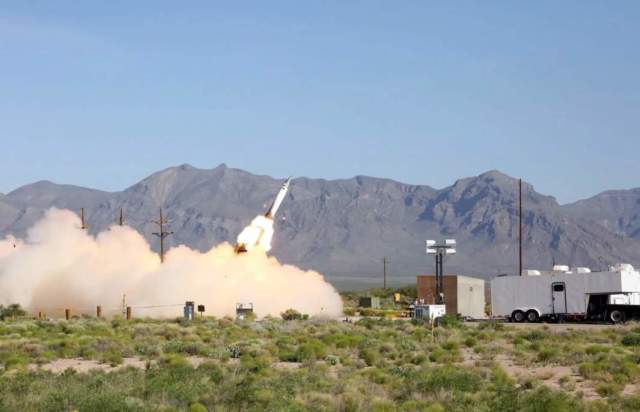
PrSM Rocket Launch
Image source: Photo: U.S. Army LRPF
In the future, PrSM will receive a guidance system that will be able to track moving targets — this will be a rocket with a combined multi-channel homing head Land-Based Anti-Ship Missile (LBASM), work on which has been underway since 2020. After its creation, the PrSM will become more versatile and will be able to be used against moving land and sea targets, for example, ships, or tanks, or groups of equipment on the march.
Reducing the size compared to ATACMS missiles will double the ammunition capacity of each HIMARS and MLRS launcher: the former will be able to carry two ammunition instead of one, and the latter — four instead of two.
This increases the combat performance of missile launchers of the US Army by two times, and taking into account the range and accuracy, the combat capabilities of the units more than double. The new missiles can hit targets not only in the tactical depth of defense (70-100 km), but also in the operational and tactical, as well as in the rear - at distances of 300-400 km or more from the front line.
At the same time, it should be understood that new ammunition will fly for less than five minutes at a range of 500 km and it will be quite difficult to shoot down a missile that flies and performs an anti-missile maneuver at a speed of about 5 M. Although our air defense systems shoot down ATACMS missiles, and they have a speed only slightly less than the promising PrSM.
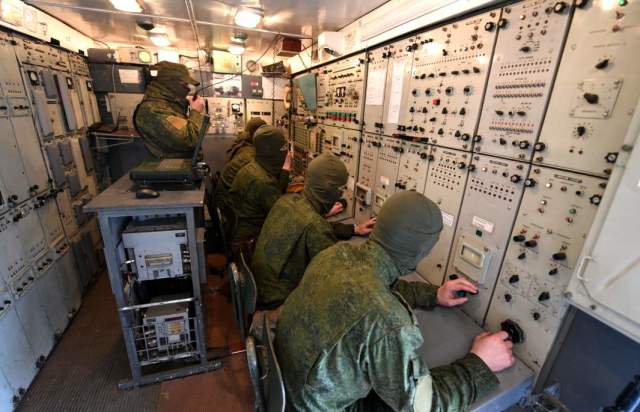
Photo: RIA Novosti/Victor Tolochko
Image source: iz.ru
Rocket Competition
The PrSM missile program has been conducted by the US Army since 2016. Initially, the American corporations Lockheed Martin and Raytheon participated in the project in a competition between them. As a result, after a series of failures by the military-industrial company Raytheon, the winner of the competition, Lockheed Martin, was chosen. In total, 1,100 munitions are planned to be purchased under the missile development program.
The article under which the purchase is financed is intended to replenish the supply of missiles to Ukraine.
In 2024, the first 110 missiles are expected to be delivered, with a gradual increase in production rates to 400 units per year. Of course, there is no question of their supply to any foreign consumers yet, but in the future, of course, they will be available to American allies. For example, Australia became a partner in the program for the creation of these missiles back in 2021.
Development and application
The tests of the PrSM missiles were completed in November 2023. Launches from the HIMARS installation were carried out at the White Sands test site. But we must understand that now the first battery is actually being transferred to the army, and units with new missiles are expected to achieve full combat readiness only by 2025.
Further, until 2027, it is planned to supply the second version of the ammunition with a homing system. Then it is expected to create modifications with new, more powerful warheads and variants with an increased range of LRMF (Long Range Maneuverable Fires) up to 1000 km.
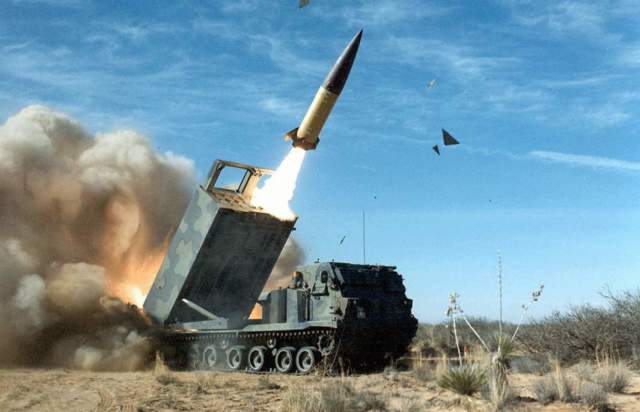
ATACMS Missile Launch
Image Source: Photo: commons.wikimedia.org
Thus, by 2030, PrSM and its developed modifications will completely replace ATACMS missiles in the US Army and take over the destruction of targets at a range of 80 to 1000 km.
As for the first combat units to be armed with the new missile, they will probably be used in the next few months to train and train personnel, as well as to practice tactics for using new equipment at landfills in the United States and outside the national territory.
It can be assumed that the new missiles will be tested in Europe, and probably in the Middle East. Moreover, if in Europe the use of missiles is possible only at parades and training grounds, then in the Middle East it is quite possible to use them to solve combat tasks.
Here, of course, the Americans need to take into account that unexploded parts and remnants of the PrSM will be of great interest to all Middle Eastern rocket scientists — Iranian, Syrian and Yemeni.
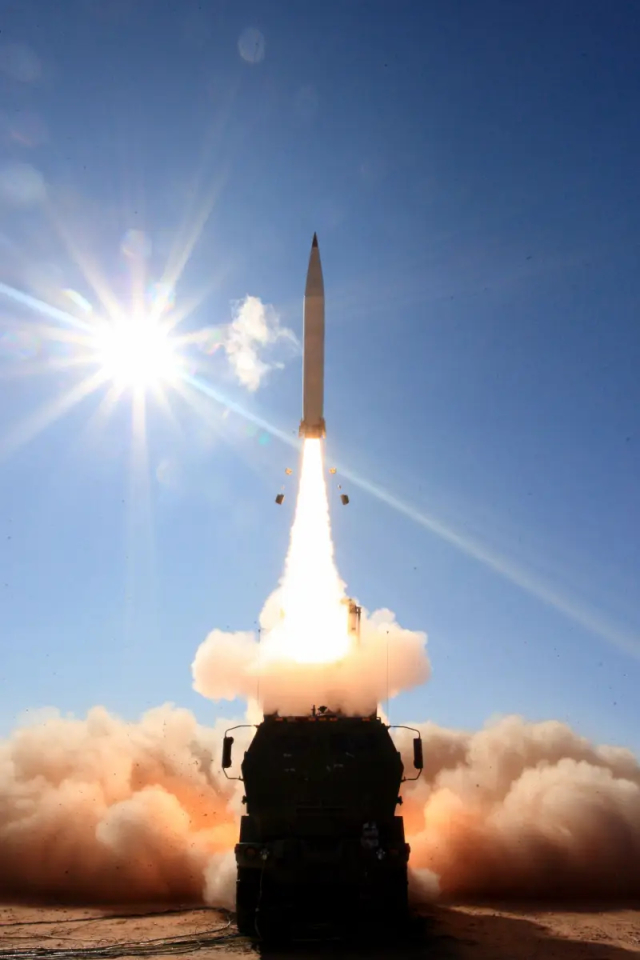
PrSM Rocket Launch
Image source: Photo: U.S. Army
Opposition to the new American missiles will be found — with some advance, the possibilities of combating hypersonic systems were incorporated into the S-500 Prometheus type air defense systems. And under the condition of interaction with it and into complexes of the S-400 type. Of course, there is already a unique Pantsir anti-aircraft complex at the final turn, and it must be understood that the development of anti-aircraft systems does not stand still. There they are loading a new rocket into HIMARS, and here they are preparing a new "Shell" against it. This is how the development of missile systems takes place.
Dmitry Kornev
